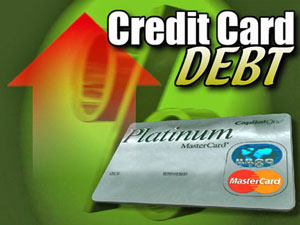How to avoid debt slavery (EconomicWarfare.org)

WASHINGTON (FinalCall.com) – Larry Morgan has a home and so far has been able to avoid the mortgage mess and foreclosure. He’s a juggler with bills and used to have a line of equity to use when things got tight. Not anymore, now he just has his credit cards and debt is steadily growing.
“It’s a bad situation out here. Everything costs more and the refinancing I used to be able to do when I needed money, I can’t do that anymore. All I have are my credit cards and soon they’ll be maxed out,” he said.
That’s a problem Tim Westrich, a research associate at the Center for American Progress, warns about in a recent analysis, “Problems with Plastic—Credit Card Debt Hits Record High.”
“We predict this can be a similar situation to the mortgage crisis. In the mortgage crisis people got mortgages that they either didn’t understand or couldn’t afford. We see possibly a similar pattern with credit card debt,” said Mr. Westrich.
He told The Final Call, “People either don’t understand the legalese that comes with credit card fees and agreements or they just get credit cards they can’t afford to pay for, which ultimately will lead to people defaulting on their credit cards like they are doing with their mortgages.”
Amid the worsening U.S. housing crisis, lenders are tightening mortgage standards, leaving only the most credit worthy borrowers able to take out new mortgages and tap new home equity lines of credit.
That means more and more Americans are racking up record levels of credit card debt to make ends meet–accepting expensive and potentially explosive debt lenders continue to offer.
Data released by the Federal Reserve April 7, showed U.S. credit card debt has reached $951.7 billion–up 8.2 percent from a year ago and the highest amount ever recorded.
This is bad news piled on top of the rapid accumulation of consumer credit card debt in the past six years.
“People are used to pulling equity from their homes for a long time. Those costs have exceeded $500 billion,” said Dr. Steve Fazzari, a senior scholar of the Jerome Levy Economics Institute at Washington University in St. Louis. “The housing crisis makes this more difficult to do but they’re used to getting this money. However the interest rates on credit cards are much higher and they’re not tax deductible. People need to tighten their belts to deal with this.”
With the costs of basic expenses–such as milk, rice and gas–on the rise, many Americans are being pushed against a financial wall. “People are burning two ends of the same candle,” said Mr. Westrich. “People are less able to take out credit lines on mortgages and now want to finance their lifestyle with credit cards. They are faced with the pressures of rising costs and credit cards are the pressure valve. People are demand driven in spite of the fact that incomes haven’t gone up since 2000.”
Some estimate credit card issuers send over 6 billion mailings to U.S. households every year. This new slave master comes in the mail with a smile and promises of low initial rates.
Many consumers don’t consider the fact that credit cards have higher borrowing costs than other forms of debt due in part to high fees, consequently many borrowers fall deeper into debt.
“While people are trying to maintain their standard of living with credit cards it won’t last long. Interest rates are soaring higher and higher on credit cards. They can delay the crash but credit cards won’t cushion it for long. The day of reckoning is coming,” warned Dr. Fazzari.












